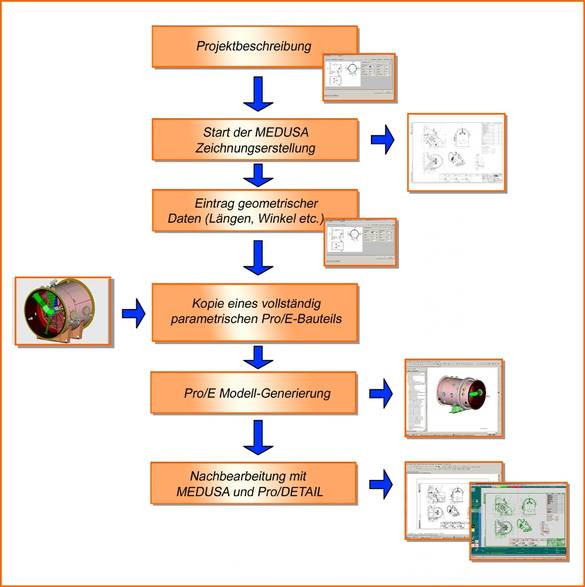Taprogge and MEDUSA
Water Filtration Device Design with MEDUSA4
“It’s difficult to put an exact figure on how much time and money we have saved over the years, but there’s no doubt that MEDUSA has long paid for itself. Of course it’s not only about money. Because of the extensive design automation, we can offer and rapidly produce flexible, client-specific solutions. In our view, this gives us an important competitive edge.”
– Dr. Guido Keller, Engineering and Manufacturing Department Manager, Taprogge GmbH
While it is quite common for an engineering firm to deploy a 2D CAD system to complement its 3D tool, extending its ability to create designs, conceptual layouts, or documentation, it is by far more unusual when a 3D system is seen as a practical addition to the 2D solution; and yet this is exactly the – extremely successful – approach that Taprogge GmbH of Wetter, in the German Ruhr area, took when augmenting MEDUSA® with Pro/ENGINEER®.
Be it in a sea water desalination plant in Saudi Arabia, or the cooling water circuit of a power plant in Switzerland – when water is used in technical processes, it flows through pipes that are sensitive to impurities. In order to maintain water purity, avoiding a mixture of organic or inorganic foreign substances which eventually render expensive machinery unusable, it must be filtered. While most of us might conjure up the image of a simple straining device, filtration devices are, in fact, complex systems, individually customised to meet specific requirements and customer demands.
Global leader in water circuit optimisation
Virtually no other company in the world has as much experience in water purity as Taprogge GmbH, based in the Westphalian town of Wetter-on-the-Ruhr in Germany. The company has been optimising water circuits for power stations, sea water desalination, refrigeration, and general industry for over 50 years. With highly efficient filtration and water collection technologies, as well as with the “TAPROGGE System”, which pushes sponge balls through pipes to clean heat exchangers and condensers, the firm has assumed a world leading position in this specialist market. In addition to manufacturing custom filtration systems, the company deploys its know-how in the areas of planning and maintenance. Numerous plant and process-specific inventions, and highly efficient design and manufacturing processes bear witness to the fact that Taprogge has not been resting on its laurels, but works continuously to further improve and innovate, ensuring that it retains its number one position. The company, which has subsidiaries in 11, and representatives in over 60 different countries, currently employs 350 staff members. There are more than 12,000 TAPROGGE systems installed in over 100 countries worldwide.
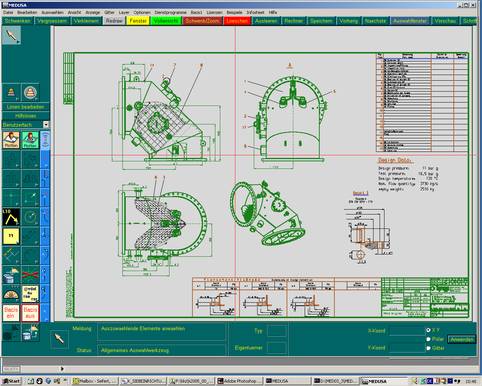
A large percentage of custom design
Even though engineers often use time and cost-saving modular design techniques, including standardised filter construction series with various performance specifications and criteria, most projects demand a high degree of customisation. In almost all of the approximately 200 projects annually, different fitting/integration requirements and maintenance conditions demand numerous modifications to basic designs. The kind of flexibility required for such projects requires rigorous planning and a lot of complex custom design work. Alongside numerous standard drawings, 40-50 project-specific designs are produced for each project – an effort which used to take weeks of work before the advent of computer aided design.
At Taprogge, it was clear from the very beginning that achieving significant time and cost savings required more than ‘simply’ introducing a CAD system. Sweeping improvements are only achieved where processes and working methods are adapted to the new possibilities introduced by computer aided design. That insight came around twenty years ago, when Taprogge’s design process started being systematically automated through the deployment of the MEDUSA design automation suite, which reduced the time it took to create project designs to a matter of hours. While the decision taken at that time was certainly influenced by MEDUSA’s extraordinary design and drafting functionality, Taprogge saw the biggest benefits in the ability to create design task specific system customisations to achieve significant process automation.
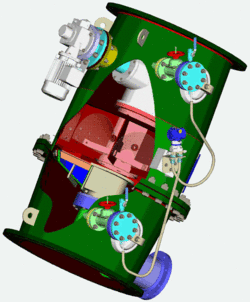
MEDUSA – Perfectly tuned to requirements and processes
When Taprogge initially chose to deploy MEDUSA, Dr. Guido Keller, Engineering and Manufacturing Department Manager, still wore his school trousers. His generation treats CAD systems as his predecessors did the slide rule. Although he has considerable experience with 3D systems, he is completely convinced by the rationale behind a focus on 2D. ”MEDUSA gives us the kind of design flexibility that is hard to imagine with other systems. Its extensive functionality and excellent customisability have allowed us to create a system which exactly matches our requirements and processes.”
Dr. Keller knows MEDUSA inside out, since his department is responsible for a large part of the company’s design-related work and documentation. His team provides the design services for Taprogge’s sales-oriented project development engineers, who are responsible for general installation layouts, as well as implementing client-specific customisations, such as filter dimensions and strainer arrangements. The company currently uses 25 MEDUSA licences, including add-on modules like Parametrics and the Pro/ENGINEER integration.
CAD Schroer, the global engineering systems provider that acquired the MEDUSA product line from PTC® in 2001, and has worked ceaselessly to modernise and develop the software since, looked after systems installation at Taprogge. The company’s own engineering background, technical have no doubt contributed to the success of the longstanding MEDUSA deployment at Taprogge.
Design Automation is Key
Taprogge successfully automated its design processes by employing modular design methods, a high percentage of standard parts, and consistent design principles. Initially, the company carried out an intensive analysis of its processes, as well as its completed projects, collecting the required knowledge for developing key automation routines.
The resulting project management tool is called a ‘Project Configurator’. It is a collection of programs written in C and Fortran, which display dialogs requiring project engineers to enter all relevant design parameters, such as gauge, capacity, etc. Once the data has been entered, MEDUSA Parametrics kicks in to automatically generate a full set of designs.
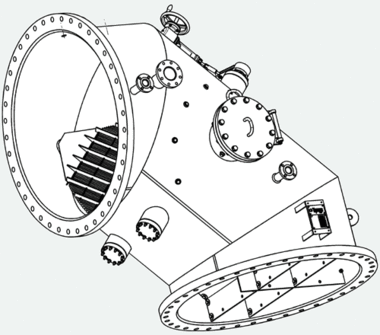
It’s difficult to put an exact figure on how much time and money we have saved over the years,” says Guido Keller, “but there’s no doubt that MEDUSA has long paid for itself. Of course it’s not only about money. Because of the extensive design automation, we can offer and rapidly produce flexible, client-specific solutions. In our view, this gives us an important competitive edge.”
MEDUSA remains the leading CAD system
A lot has changed over the last 20 years. Like many other companies, Taprogge looked into whether some of the more complex product development challenges might not be better addressed using a 3D System. Their answer: ”yes and no”. So in 2002, the company decided to introduce Pro/ENGINEER. Nevertheless, the 20-year-old decision to deploy MEDUSA, along with all the arguments in support of 2D design automation, remains sound.
MEDUSA remains the standard by which other MCAD solutions are measured. And from Taprogge’s point of view, no competitor has yet succeeded in surpassing its efficiency. MEDUSA has remained the leading system which (sometimes integrated with other systems) provides such things as design number allocation, parts list creation, and plot management.
MEDUSA and the 3D world
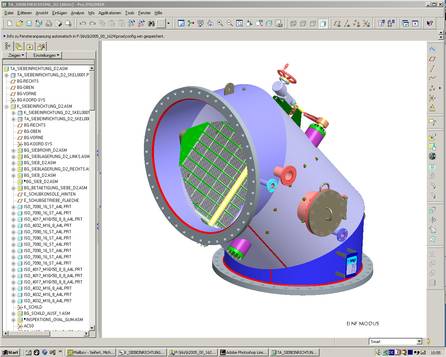
Taprogge considers Pro/ENGINEER to be the ideal complement to MEDUSA. The successful product integration is due in part to the high level of inter-operability made possible through the tight Pro/ENGINEER interface provided by CAD Schroer, and in part to the company’s conscious decision not to subordinate objective functional requirements to potentially political decisions.
As a result, design engineers can choose which system – whether MEDUSA or Pro/DETAIL™ – they use to carry out specific design tasks. MEDUSA’s Pro/ENGINEER integration guarantees a bi-directional 1:1 mapping of all design data. As in the past, MEDUSA is deployed on around 80 percent of drafting assignments, partly because many employees have worked with it for years, and partly because the software works the way engineers do.
The bottom line
The introduction of Pro/ENGINEER at Taprogge has done little to change the status of MEDUSA. Extensive functionality, extreme flexibility, and a high degree of design automation are benefits which continue to apply. And Taprogge has managed to successfully combine the advantages of both systems and philosophies for superior productivity.
“To date we have seen no better alternatives to the systems we are using,” says Dr. Keller. “Although the initial investment was relatively high, because we wanted to get the customisations right from the beginning, they have more than paid for themselves through the automation we have achieved. I’m also keen to point out that such a sophisticated product implementation can only be achieved and maintained through the kind of highly competent technical support we have received from our supplier, CAD Schroer.”
